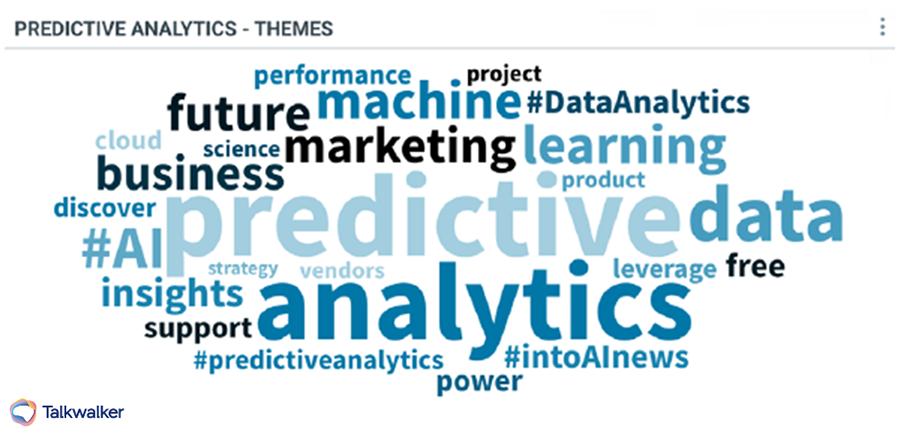With marketers having to navigate the fast-evolving digital landscape as consumer expectations change, Talkwalker’s David Low identifies some of the consumer trends that brands must focus on in 2023.
Recent years have been nothing short of disruptive for businesses with a global pandemic, supply chain issues, the ongoing climate crisis and consumers now faced with the rising cost of living. These events and environmental pressures have accelerated the change in consumer behaviours and expectations. Today's consumers are more connected and presented with a range of options, which mean that they can come across as more fickle, more demanding and also desiring personalised brand experiences.
It has never been more critical to understand these evolving consumer expectations. Bad customer experience (CX) is costing global businesses some US$4.7 trillion in lost spending every year, with US$11 billion lost in Singapore alone.
As brands try to keep pace, they need deeper and faster insights around consumers to understand what matters the most in the moment. To help marketers navigate the fast-evolving digital landscape, Talkwalker partnered with Khoros to release the eighth edition of the Social Media Trends 2023 report identifying 10 consumer trends that brands and marketers must focus on in 2023. Here are a few.
Trend 1: Decentralised networks will be the next big thing
There are growing concerns around data privacy and lack of control over individual data. With the incumbent social media platforms, consumers have less of a say in decisions on what can be published, how data is stored, what type of censorship is put in place and more. These are instead determined by those who run the network.
In the pursuit of greater autonomy over the use of their data and more authentic experiences, some consumers in Southeast Asia are already switching from mainstream social channels to decentralised alternatives such as Mastodon and BeReal. Similar trends are also seen in how people transact online and on social channels, with the emergence of decentralised networks such as blockchain.
Leading payment infrastructure providers such as Stripe and PayPal have already integrated cryptocurrency payment options, which leverage blockchain technology. User interest in decentralised networks and their key drivers will certainly warrant more attention from the big players in 2023.
Trend 2: Multi-sensory social media will provide content for all
The past few years have shown us that no single content format reigns supreme. Brands need to continually experiment with formats that engage the audience the most. While short-form videos remain popular, for instance, audio content such as audio rooms and podcasts are also vying for consumers’ attention.
As we move closer to an “internet of senses” (technology to create digital sensory experiences), the trend will be to have a true multi-channel, multi-format approach for multi-sensory experiences. The objective is not just to immerse consumers in new and interactive ways but also to create a more accessible experience that provides the content formats that the audience demands. Brands are expected to invest further in bringing sensory elements to digital experience in 2023, from gamification to fully immersive digital malls, which 45% of consumers want to experience by 2030.
Trend 3: Predictive analytics will disrupt marketing
Predictive analytics has been guiding underwriting and credit scoring for years but in 2023, we will have the chance to see it disrupt marketing. Leveraging algorithms, AI, data and machine learning, predictive analytics can help marketers predict consumer behaviours, personalise customer lifecycles and optimise marketing campaigns.

Keywords mentioned by marketing professionals about predictive analytics (Talkwalker Consumer Intelligence, Jan to Aug 2022)
In the Asia Pacific region, however, three in four marketers lack confidence in their data and analytics capabilities. This may soon change with more awareness and traction gained in social conversations among marketing and communication professionals. The availability of sophisticated social listening features such as Talkwalker’s Forecasting are already enabling brands to predict how a conversation will evolve through the AI analysis of historical data.
Trend 4: Personas are over, you will think “communities”
Finally, our report predicts that brands in 2023 will increasingly target their broader brand communities, moving away from persona marketing.
The pandemic has left us with consumers exhibiting a new range of interests and drivers, making them harder to pin down. In order to keep up with their changeable behaviours, brands will need to focus on gaining a deeper knowledge of their consumer ecosystems to understand exactly who is driving and sharing brand-focused conversations – as opposed to which personas.
In these community spaces, it is less about the influencer broadcasting content and more about the organic relationships and connections that arise from user interactions. With 66% of brand communities reporting increased loyalty, it’s no wonder that more brands will want to invest in the growth of their communities.
Start with consumers to end with brand success
To gain a competitive edge, brands need to prioritise their consumers’ needs and be in the game even before conversations turn into trends.
As a consumer intelligence platform, Talkwalker is dedicated to helping brands put their consumers at the centre of all their decisions, whether it’s predictive insights through Forecasting or leveraging large language models to shorten the time to insight.

